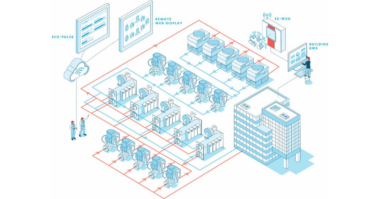Armstrong Fluid Technology has announced the launch of OPTI-POINT™, a self-learning optimization technology that enables Active Performance Management by creating a digital twin of a mechanical system and learning its operating characteristics in real time.
OPTI-POINT optimizes system efficiency and reduces energy consumption by as much as 50% compared to traditional system designs. It also safeguards system optimization by addressing mechanical drift and performance degradation. Employing predictive diagnostics and condition-based maintenance, OPTI-POINT minimizes plant operating costs.
Peter Thomsen, Director, Building Systems Solutions with Armstrong comments, “OPTI-POINT creates a new understanding of how we can reduce construction costs and find remarkable operating savings. With OPTI-POINT, developers and contractors can save over $3 per sqft on the construction costs for commercial buildings and Building Owners can reduce annual ownership costs by 45 cents per sqft.”
About Armstrong Fluid Technology
With over 1200 employees worldwide, operating seven manufacturing facilities on four continents, Armstrong Fluid Technology is known as an innovator in the design, engineering and manufacturing of intelligent fluid flow equipment, control solutions and digital technologies such as Design Envelope. With expertise in demand-based control, digitalization, fluid flow, and heat transfer, Armstrong Fluid Technology leads the fluid systems industry, including HVAC, plumbing, gas transmission and fire safety, providing the most energy-efficient and cost-effective solutions to building and facility professionals around the world.
Armstrong Fluid Technology is committed to sustainability. In 2018, the company launched its 2 by 22 initiative, a program that aims to reduce Greenhouse Gas emissions among customers by 2 million tons by the year 2022. In 2019, Armstrong signed the Net Zero Carbon Buildings Commitment, a program launched by the World Green Building Council. As a signatory to the program, Armstrong has pledged to ensure that all its offices and manufacturing facilities will operate at net-zero carbon by the year 2030.




